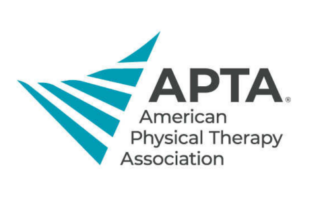The Alliance for Connected Care aims to:
Demonstrate the importance of Connected Care as a tool for improved quality and efficiency.
Build significant and high-level support for Connected Care among leaders in Congress and the Administration.
Enable more telehealth to support new models of care.
Lift geographic and site restrictions for telehealth in Medicare.
Establish a consensus-based, standardized definition of Connected Care to advance with policymakers.
Alliance News
Journal of Medical Internet Research: Statistical Analysis of Telehealth Use and Pre- and Postpandemic Insurance Coverage in Selected Health Care Specialties
Journal of Medical Internet Research: Statistical Analysis of Telehealth Use and Pre- and Postpandemic Insurance Coverage in Selected Health Care Specialties This study analyzed telehealth use across specialties in Arkansas before and after the pandemic (2017-2022) using data from electronic medical records from the University of Arkansas for Medical Sciences Medical Center. The study found an 89 percent increase in telehealth visits across all specialties. In-person visits covered by Medicare and Medicaid decreased by 15 percent between 2019 to 2022. During 2020 to 2022, about 22.84 percent of total telehealth visits during this period were covered by Medicare and 53.58 percent were in psychiatry, obstetrics and gynecology, [...]
BMC Primary Care: Primary Care Patients at Risk for Suicide in Mental Health Treatment
BMC Primary Care: Primary Care Patients at Risk for Suicide in Mental Health Treatment This study identified barriers and facilitators to engagement in mental health services among primary care patients at risk for suicide to inform the development of strategies to increase engagement. The most identified barriers to mental health care engagement were waitlists, capacity limits, insurance, patient characteristics, communication, collaboration, and/or difficulties surrounding travel. The most commonly cited facilitators of engagement included telehealth, integrated care models, reminders, case management support, psychoeducation, motivational enhancement, and scheduling flexibility.
Peterson Health Technology Institute (PHTI): 2024 State of Digital Health Purchasing
Peterson Health Technology Institute (PHTI): 2024 State of Digital Health Purchasing PHTI, in partnership with NORC at the University of Chicago, released a survey showing that spending on digital health increased rapidly over the past two years. Purchasers—including health plans, employers, and health systems, plan to continue to grow their spending on digital health offerings in the year ahead for solutions that can deliver health benefits, positive user experience, and return on investment. Three out of five (60%) health plans cited cost savings as a top reason for increased investment in digital health; 49% of health systems and 34% [...]
Centers for Disease Control and Prevention: Attention-Deficit/Hyperactivity Disorder Diagnosis, Treatment, and Telehealth Use in Adults
Centers for Disease Control and Prevention: Attention-Deficit/Hyperactivity Disorder Diagnosis, Treatment, and Telehealth Use in Adults In 2023, an estimated 15.5 million U.S. adults had an ADHD diagnosis, approximately one half of whom received their diagnosis in adulthood. Approximately one third of adults with ADHD take stimulant medication; 71.5 percent had difficulty filling their prescription because the medication was unavailable. Approximately one half of adults with ADHD have ever used telehealth for ADHD services. Telehealth might have benefits for persons with ADHD, including helping them access behavioral treatment or medication prescriptions for ADHD.
Mayo Clinic Proceedings Digital Health: Use of a Head-Mounted Assisted Reality, High-Resolution Telemedicine Camera and Satellite Communication Terminal in an Out-of-Hospital Cardiac Arrest
Mayo Clinic Proceedings Digital Health: Use of a Head-Mounted Assisted Reality, High-Resolution Telemedicine Camera and Satellite Communication Terminal in an Out-of-Hospital Cardiac Arrest Mayo Clinic Ambulance Service is testing a novel combination of technologies to enhance the ability to provide prehospital telemedicine connecting physicians with paramedics. Mayo Clinic Ambulance Service partnered with start-up company OPTAC-X to field test a novel head-mounted video camera connected with a satellite communications terminal to bring medical control emergency medicine physicians to the patient and paramedic by video. The study presents the first case of a physician providing medical guidance to paramedics resuscitating an [...]




















